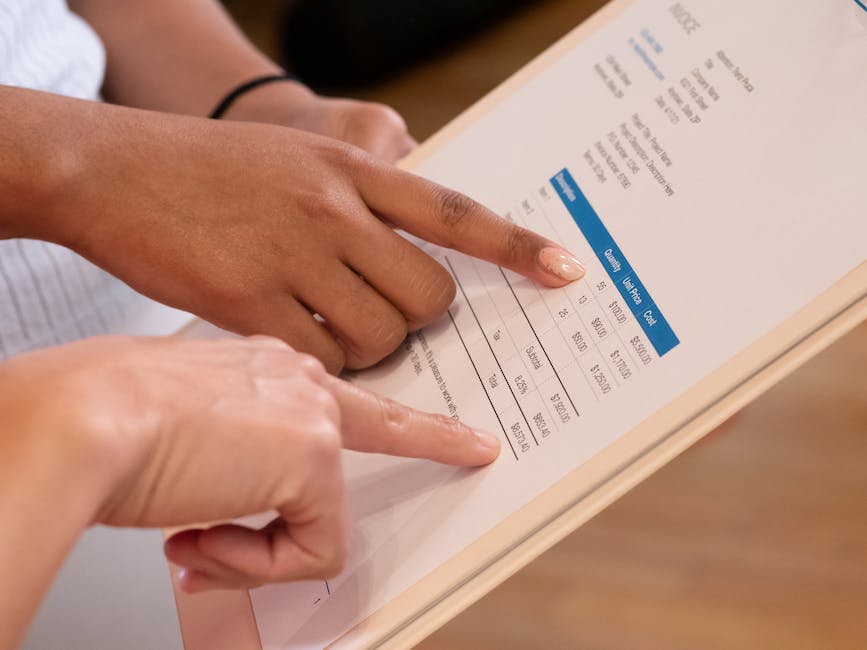Invoice vs Receipt: The Key Differences

As a freelancer, understanding the difference between an invoice and a receipt is crucial. This knowledge is not only important for managing your finances effectively but also plays a significant role in building and maintaining professional relationships with clients. Being able to differentiate between these two documents can help you ensure timely payments, avoid disputes, and keep an organized record of all financial transactions.

Defining Invoices
An invoice, from a freelancer’s perspective, is a document sent to a client to request payment for services provided or products delivered. It includes key elements such as the details of the service provided, the amount due, payment terms, due date, and the contact details of both the freelancer and the client. In essence, an invoice serves as a bill stating what the client owes the freelancer.
It’s worth noting that the structure and layout of an invoice can vary depending on the freelancer’s preferences and the nature of the services or products provided. However, the basic components remain the same.
The Role of Invoices in Freelancing
But why are invoices important to freelancers? Well, they play a pivotal role in financial management. Invoices serve as a record of sales and income, which is essential for tracking due payments and managing cash flow. They can also provide a clear overview of your financial performance over time, enabling you to make informed decisions about your business.
Furthermore, invoices are legal documents. They serve as proof of income, which is vital when it comes to filing taxes or proving income for loan applications. Therefore, it’s important to keep all invoices for record-keeping and tax purposes. Isn’t it interesting how a simple document can have such a significant impact on your freelance business?
Defining Receipts
Let’s start with the basics – what exactly is a receipt in the context of freelancing? Picture this: you’ve finished a project for a client and they’ve made a payment. The document that acknowledges this payment is a receipt. It’s a written acknowledgement that a specified article or sum of money has been received as an exchange for goods or services.
The main features of a receipt include the date of payment, the method of payment (such as cash, credit card, or bank transfer), the amount paid, and the details of the service or product. It’s a way of saying, “I’ve received your payment for this.” It’s a straightforward, yet crucial document in the freelancing world.
The Importance of Receipts in Freelancing
Ever wondered why receipts are so important in freelancing? Well, think of a receipt as a protective shield. It’s your proof of payment for services or goods, and it can save you from a lot of potential issues down the line.
Receipts play a crucial role in preventing disputes over payment. Imagine a client claims they’ve paid for a service you provided but you have no record of it. A receipt is the tangible proof that can clear up any confusion. It’s like a trusty sidekick that helps maintain a transparent record of transactions, ensuring both parties are on the same page.
Receipts as Legal Documents
Receipts aren’t just pieces of paper or digital notes. They’re also legal documents with significant weight. They’re like the superheroes of the financial world, swooping in to save the day when disputes or discrepancies arise.
In legal terms, a receipt can serve as evidence that a transaction took place. If a client ever disputes a payment or claims they didn’t receive a service, the receipt is your go-to document. It’s the undeniable proof that the client paid for and received a service or product. It’s a powerful tool in your freelancing toolkit, so don’t underestimate it!
Key Differences Between Invoices and Receipts
While invoices and receipts may seem similar, they serve different purposes and contain different types of information. An invoice is a request for payment that a freelancer issues to a client before payment is made. It details the services provided, the total amount due, the payment terms, and the due date. On the other hand, a receipt is a document that confirms payment has been made. It is issued after payment and includes information such as the date of payment, payment method, and amount paid.
Another significant difference between an invoice and a receipt lies in their function. An invoice is used to track due payments, manage cash flow, and serve as a legal record for tax purposes. A receipt, however, serves as proof of payment, and can be vital in preventing disputes over payment and maintaining a transparent record of transactions.
| Invoice | Receipt | |
|---|---|---|
| Purpose | Request for payment | Confirmation of payment |
| When Issued | Before payment | After payment |
| Information Included | Details of service, amount due, payment terms, due date | Date of payment, payment method, amount paid |
| Function | Track due payments, manage cash flow, legal record for tax purposes | Proof of payment, prevent disputes, maintain record of transactions |
Why Understanding the Difference Matters for Freelancers
Understanding the difference between an invoice and a receipt is not just a matter of semantics. It is a crucial aspect of financial management for freelancers. Knowing when and how to issue these documents can help maintain professionalism, ensure timely payments, and protect your legal rights.
For instance, issuing an invoice sets a clear expectation of payment from your clients. It outlines the details of the service provided and the amount due, thereby reducing the possibility of any misunderstanding. On the other hand, providing a receipt after receiving payment is an affirmation of the transaction. It serves as a record that can be useful in case of any discrepancies or disputes.
Moreover, both invoices and receipts are essential for tax purposes. An invoice is a record of your income, while a receipt is proof of your expenses. Therefore, keeping track of these documents can help you accurately calculate your tax liabilities and deductions.
So, are you ready to handle your invoices and receipts more efficiently?

Practical Tips for Managing Invoices and Receipts
Managing invoices and receipts as a freelancer can seem like a daunting task, but it doesn’t have to be. By implementing a few practical strategies, you can ensure that you stay on top of your financial records and maintain a professional relationship with your clients. So, how can you streamline this process?
One of the most effective ways to manage your invoices and receipts is by making use of digital tools. These tools can help you create, send, track, and store your invoices and receipts with ease. They can also help you monitor your cash flow, ensuring that you are paid on time for your services. But that’s not all. These tools can also help you maintain a transparent record of your transactions, which can come in handy during tax season or in case of any payment disputes.
Another essential tip for managing your invoices and receipts is to follow up regularly on outstanding invoices. This doesn’t mean you have to be pushy or aggressive. A simple reminder can often be enough to prompt a client to settle their bill. Remember, the sooner you get paid, the better your cash flow will be.
Lastly, it’s crucial to securely store your receipts. Whether you choose to do this digitally or physically, keeping a record of all your transactions can help protect your legal rights and save you a lot of hassle in the long run.
Popular Digital Tools for Invoicing and Receipt Management
- FreshBooks
- QuickBooks
- Zoho Invoice
- Wave
- Xero
- Invoice Ninja
Parting Thoughts on Invoices and Receipts in Freelancing
In conclusion, understanding the difference between an invoice and a receipt, and knowing how to manage these documents effectively, is crucial for any freelancer. Not only can it help you maintain a professional image, but it can also ensure that you get paid on time and keep a clear record of all your transactions. Remember, keeping on top of your financial paperwork is not just about getting paid. It’s also about protecting your legal rights and maintaining a transparent relationship with your clients.
So, are you ready to take your freelancing career to the next level?
Key Takeaways
- An invoice is a detailed bill sent to clients, while a receipt is proof of payment for services rendered.
- Digital tools can streamline the process of managing invoices and receipts.
- Regularly following up on invoices can ensure timely payments.
- Secure storage of receipts is crucial for protecting your legal rights and maintaining transparency.
- Understanding the difference between an invoice and a receipt is key to maintaining professionalism and managing finances as a freelancer.
Get Organized & Win More Clients
Kosmo has everything you need to run your freelancing business.